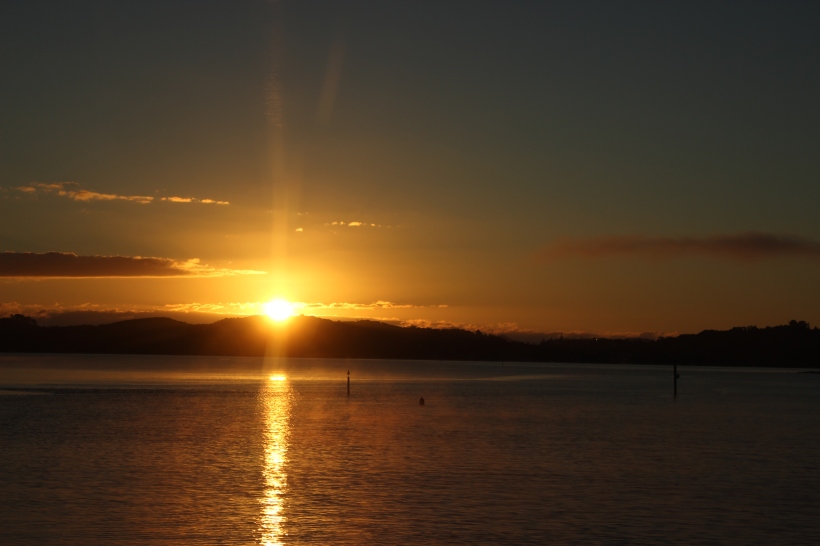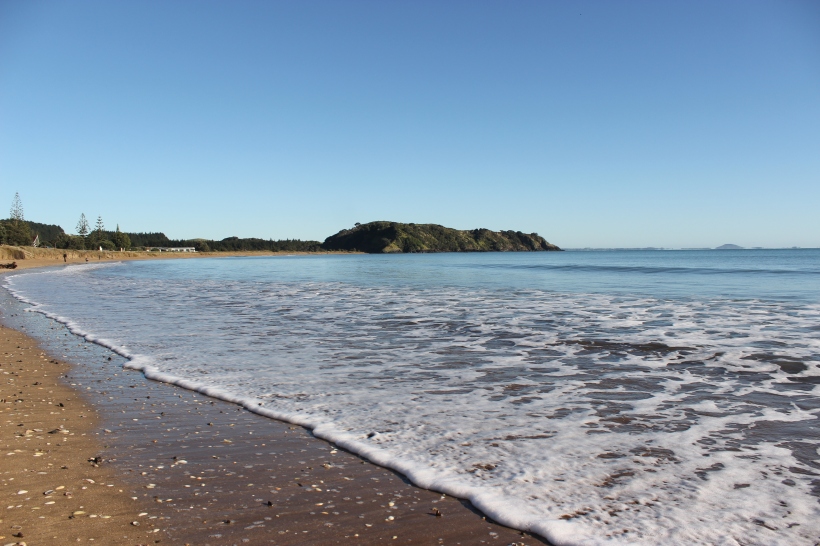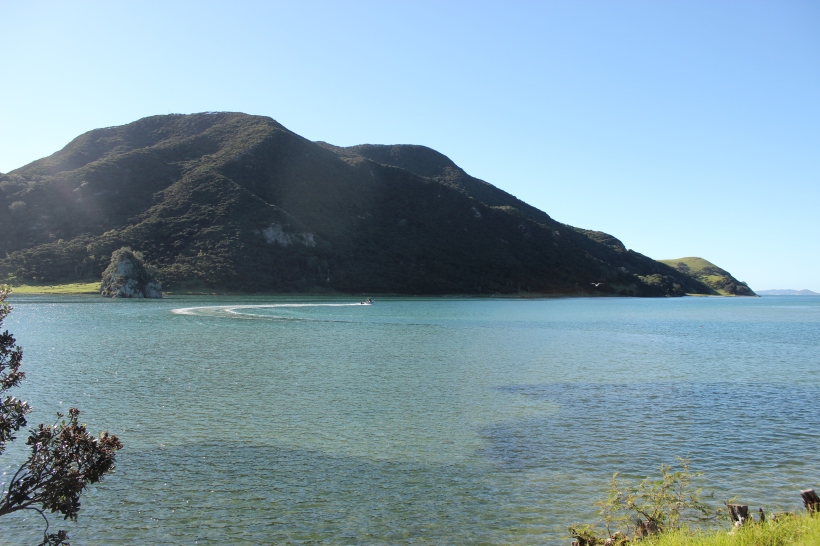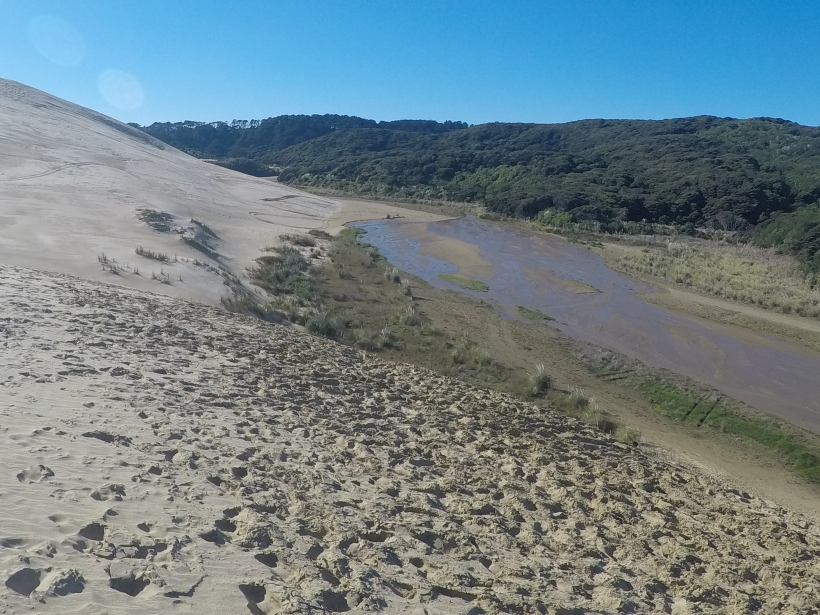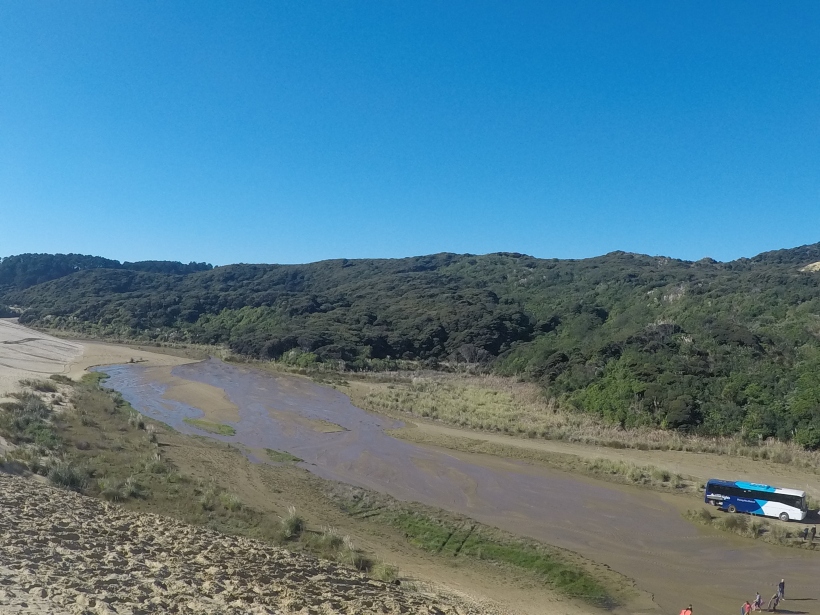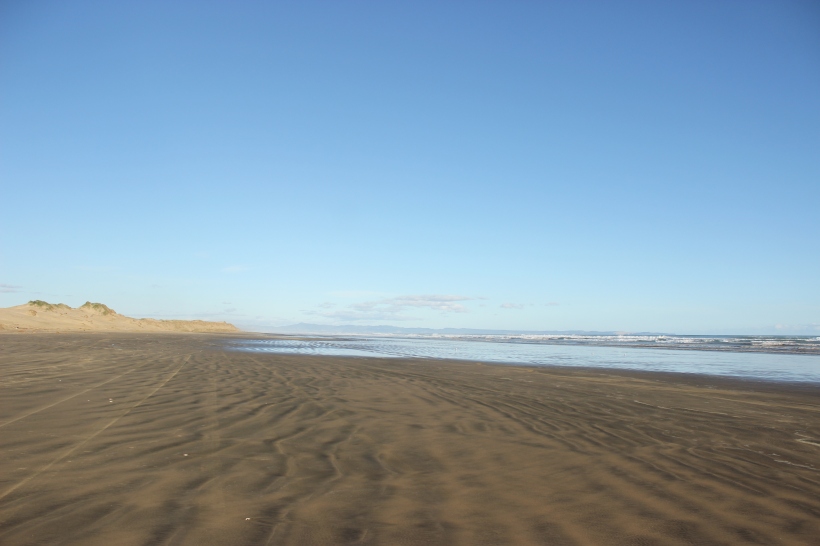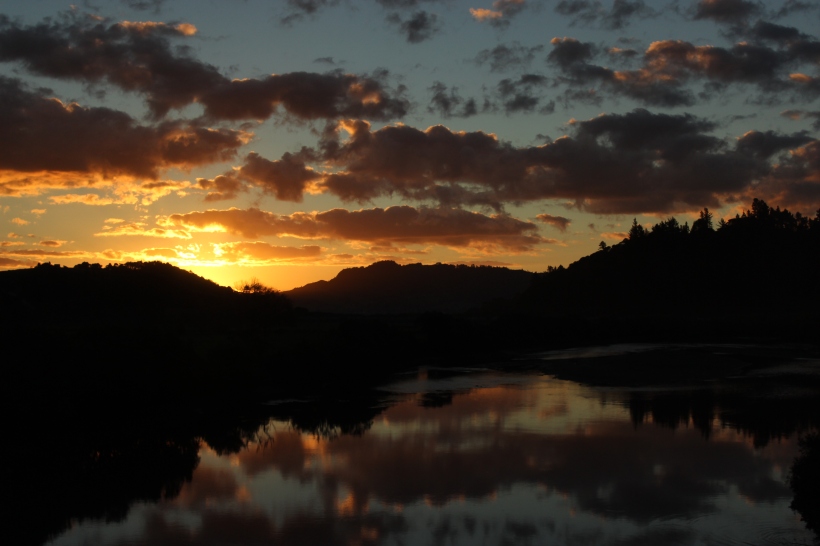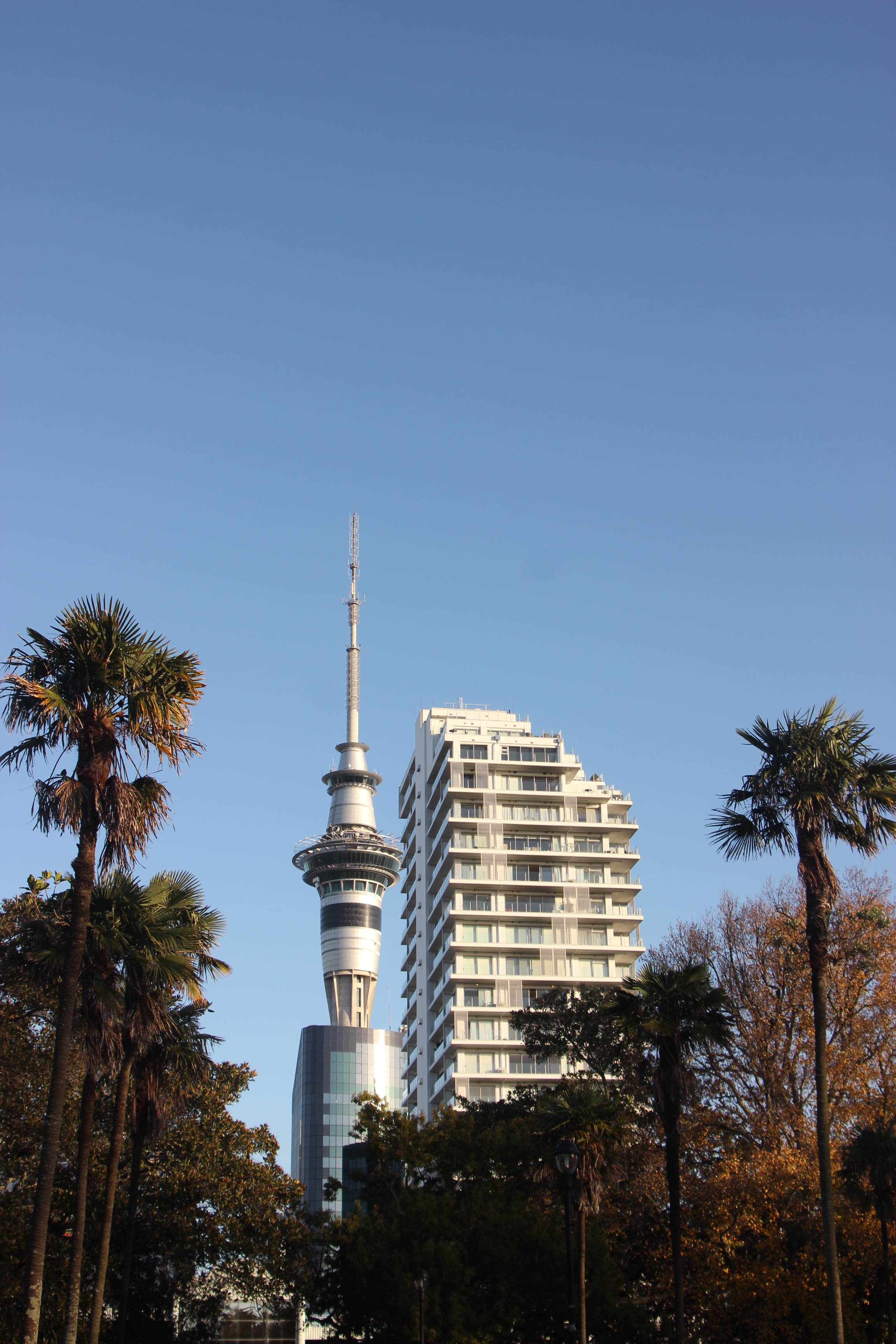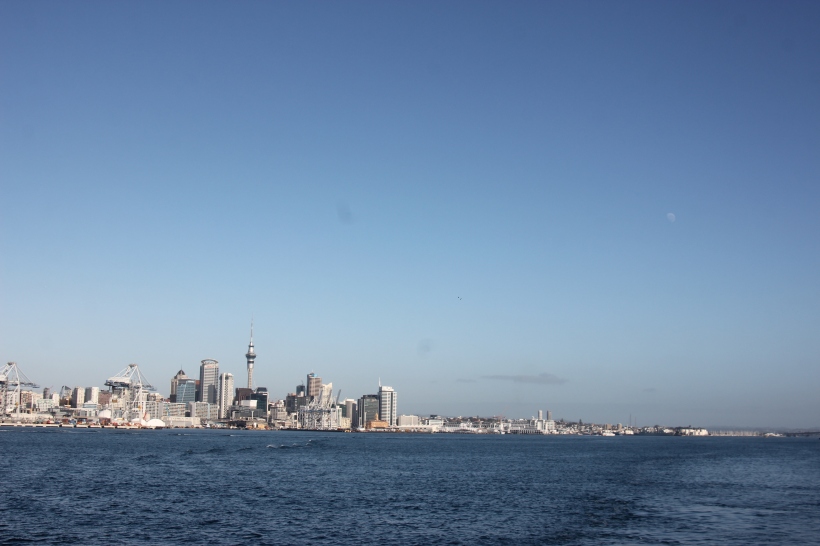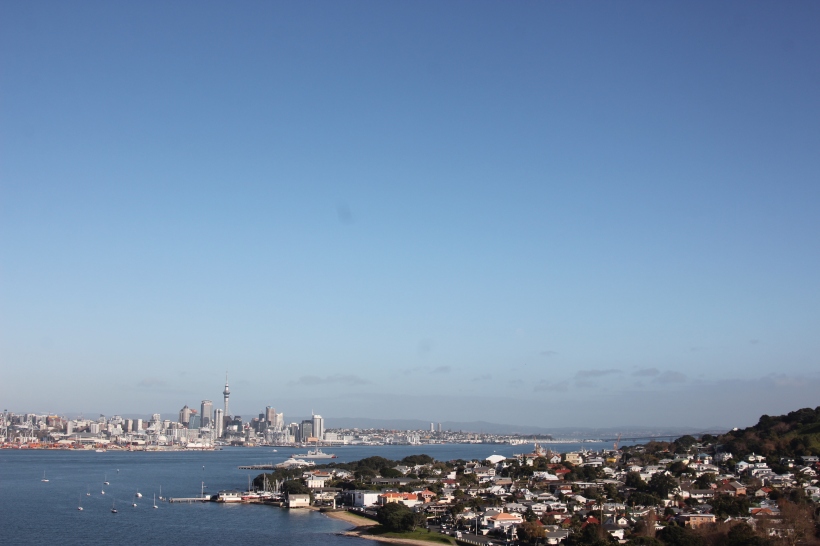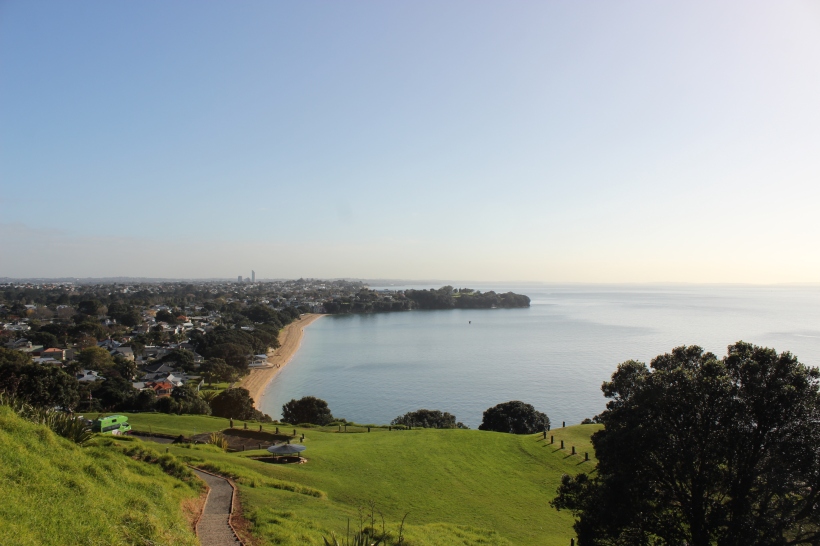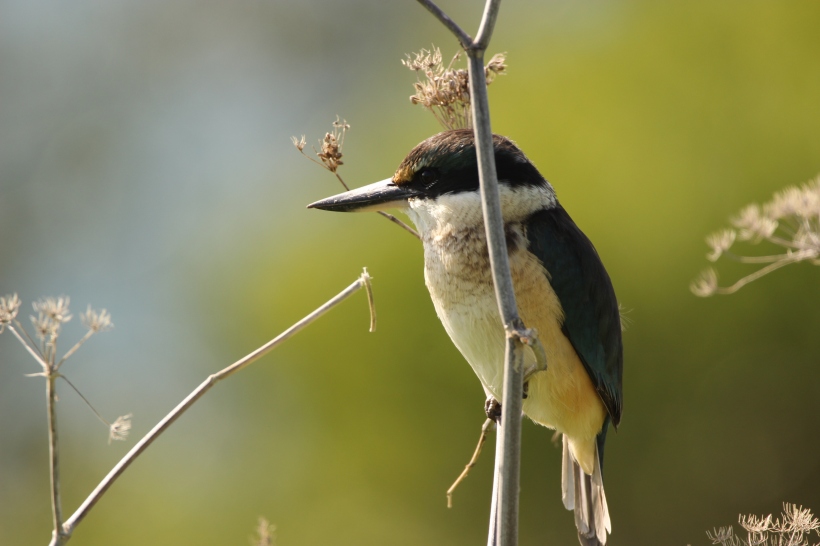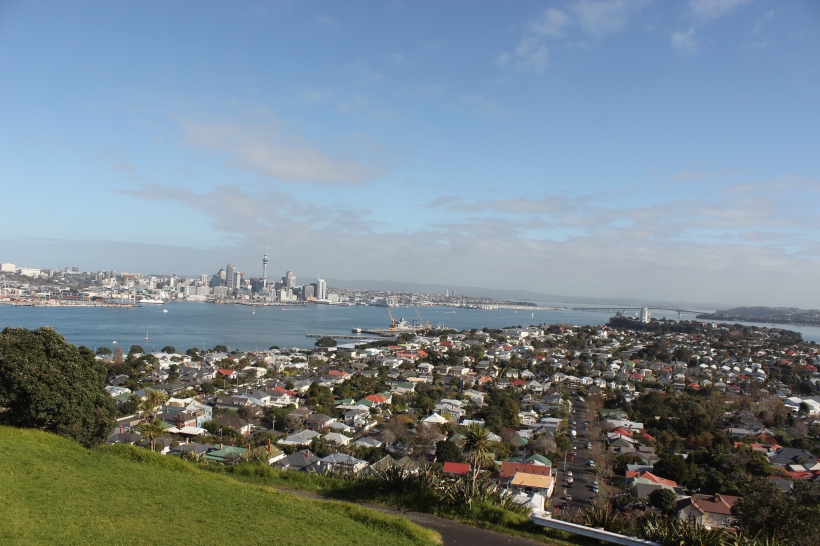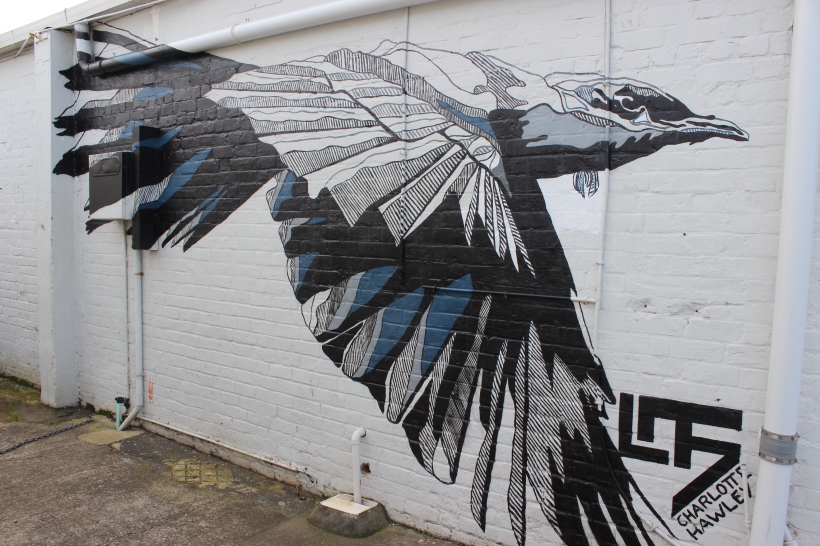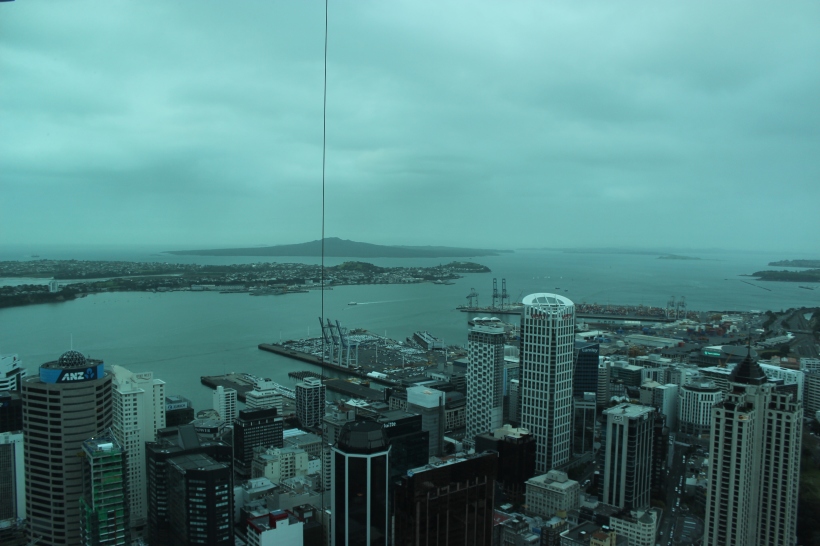Today we had an early start, leaving Hot Water Beach at 7:30am to get on the road to Waitomo. We had a stop after driving for an hour or so at Karangahake Gorge. Featuring an old gold mine and historic railway remains, there are several walking routes around the gorge including the mine tunnels however after the recent deluge, the tunnels were flooded and inaccessible. Still, the sun finally put in an appearance (a little late if you ask me but but late than never) and it was lovely to stroll around the gorge. The area was very scenic with lots of dense native bush growing around the rushing water. There were a couple of bridges to cross which was exciting as they swayed as you walked over them. The bridges had a limit of 10 people and the higher towards that number you got the more the bridge swayed as you crossed.
After about half an hour exploring the gorge we piled back onto the bus. The second stop of the day was at Morrinsville to stop off at the supermarket to buy lunch and get supplies for our stay at the next accommodation.
We made good time getting to Waitomo, arriving at The Legendary Black Water Rafting Company just after 1pm. Here we paid for the activites we had signed up for yesterday. One of my friends was being very ambitious doing the Black Abyss adventure. I had considered doing this myself but I want to try and budget myself as sensibly as I can, especially as there are more exciting things on my list to do as yet.
Out of the activities available to us in Waitomo, I decided to go for the walking tour of Ruakuri Cave. Once we’d paid for our activities and the people doing the Black Abyss had got their gear from the bus, the rest of us hopped back onto the Kiwi bus to drive down the road to our accommodation for the night, Kiwi Paka. Not exactly a hostel, we were staying in a lodge which was split into rooms of varying bed numbers.
At 3pm we boarded the mini bus to go over to Ruakuri Cave. The journey didn’t take very long, and after about 5 minutes we were standing outside the cave, excited for the tour to begin.
The cave we would be walking through is called Ruakuri Cave. Rua means den in Maori and kuri means dog – so the name roughly translates to “den of dogs”. It was discovered by the Maori people about 500 years ago and it is the longest cave in New Zealand that has been discovered. The story goes that a young Maori boy was hunting for birds when he was attacked by wild dogs just outside of the cave entrance. The boy returned to the spot with others and they made the discovery of the cave network. We did not go to the original entrance as it was used by the Maori as a burial site which is now protected. The entrance we were standing by as our guide for the afternoon introduced himself, is much more recent – built 12 years ago when the caves were reopened.
The tour takes you down a spiral staircase where your eyes start to get adjusted to the dark with orange lights. Don’t fear, anyone interested in doing the tour who might be afraid of the dark. The rest of the tour is lit however the amount of light in the cave is strictly monitored in order to preserve such a unique environment.
We then walked around stalactites and stalagmites as well as other unique and unusual limestone formations dubbed cave coral. We also encountered a few fossils in the cave from prehistoric sea creatures which was pretty neat. There was the underground river as well and we heard our fellow Kiwi Bus teammates doing the black water rafting below us. The main attraction though, was the glowworms.
The glowworms which live in the caves are arachnocampa luminosa (which sounds like a Harry Potter spell) and they are unique to New Zealand. In certain areas of the caves, the walls and ceiling (if that’s the right word) are covered in glowworms. Of course, glowworms aren’t actually worms, they are the larvae of fungus gnats. As with many insects, majority of their life is spent in larvae form and they glow as a means to attract food. The glowworms are almost perfectly spaced from one another – if they get too close they can easily become a fellow glowworm’s dinner! They glow through bioluminescence – a natural phenomenon which occurs more commonly in marine vertebrates and invertebrates. In layman’s terms, bioluminescence is a chemical reaction which involves a light-emitting molecule and an enzyme. The light the glowworms produce is blue green and I tried to capture the sheer wonder of it with my camera but without my tripod the photos didn’t come out so good. Points for trying though.
The glowworms survive as larvae for between 6 to 12 months depending on food supply. When they hatch from an egg they are about 3 to 5 millimetres in size and can grow to about 3 centimetres – quite the growth spurt. At the end of the larva stage it comes a pupa and hang from the roof of the cave on a silken thread. It will continue to glow, albeit intermittently, for one or two weeks before emerging as a gnat. In this adult stage which only lasts a matter of days, the glowworms do not feed, they simply mate, lay eggs and then die.
It was a pretty sensational tour, with a very informative and entertaining tour guide to lead us through the caves. The sun was still shining when we made it back outside although by now it was much lower in the sky. We then had the short drive back to Kiwi Paka. Potentially pizza and a pub quiz beckons so my evening’s entertainment is sorted. I’m holding out hope that the weather stays fine for tomorrow for Hobbiton.
